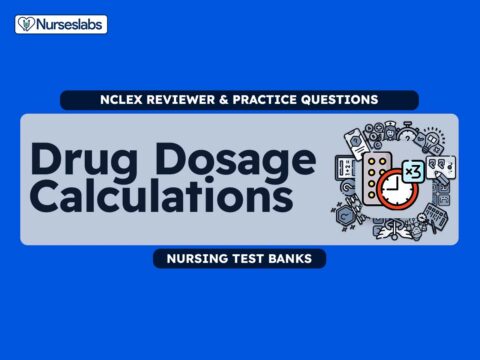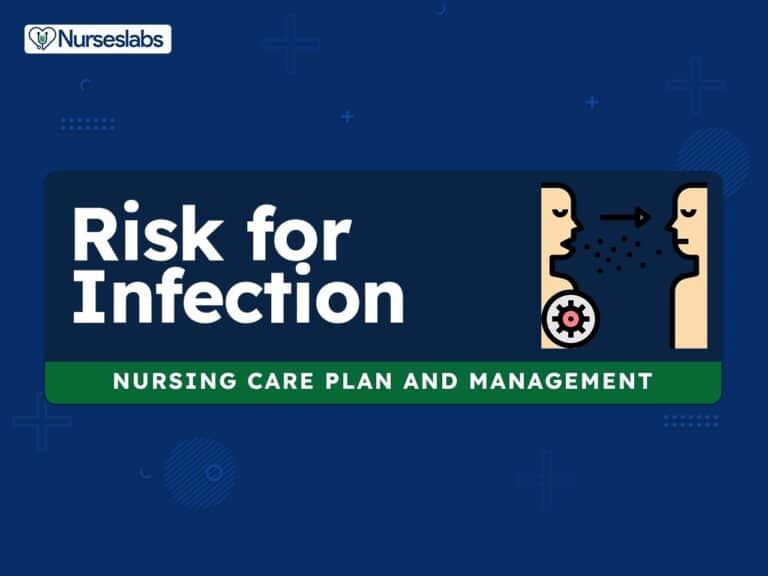Sickle cell anemia is a genetic blood disorder that affects millions of people worldwide. It is characterized by the abnormal shape of red blood cells, which can lead to numerous complications. Nursing care plans are critical in managing sickle cell anemia crisis and providing quality care for patients. In this article, we will discuss the nursing diagnosis for sickle cell anemia crisis nursing care plans and how to effectively care for patients with this condition.
What is Sickle Cell Anemia?
Sickle cell disease (SCD), or sickle cell anemia (SCA) is a group of hereditary blood disorders characterized by an abnormality in the oxygen-carrying hemoglobin molecule in red blood cells. The most common forms of SCDs are homozygous hemoglobin SS disease (sickle cell anemia), hemoglobin SC disease, and sickle [beta]-thalassemia.
Sickle cell anemia is a severe hemolytic anemia that results from the inheritance of the sickle hemoglobin gene. This gene causes the hemoglobin molecule to be defective. Sickle hemoglobin (HbS) acquires a crystal-like formation when exposed to low oxygen tension. The oxygen level in venous blood can be low enough to cause this change; consequently, the erythrocyte containing HbS loses its round, pliable, biconcave disk shape and becomes deformed, rigid, and sickle-shaped. These long, rigid erythrocytes can adhere to the endothelium of small vessels; when they adhere to each other, blood flow to a region or an organ may be reduced. If ischemia or infarction results, the patient may have pain, swelling, and fever. The sickling process takes time; if the erythrocyte is again exposed to adequate amounts of oxygen before the membrane becomes too rigid, it can revert to a normal shape. For this reason, the “sickling crises” are intermittent. Cold can aggravate the sickling process because vasoconstriction slows the blood flow. Oxygen delivery can also be impaired by an increased blood viscosity, with or without occlusion due to the adhesion of sickled cells; in this situation, the effects are seen in larger vessels, such as arterioles.
Sickle cell anemia is most common in tropical Africans in people of African descent; about 1 in 10 African-American carries the abnormal gene. If two parents who are both carriers of the sickle cell trait have offspring, each child has a 25% chance of developing sickle cell anemia. However, sickle cell anemia also appears in other ethnic populations, including people of Mediterranean or East Indian Ancestry. Overall, 1 in every 400 to 600 black children has sickle cell anemia. The defective HbS-producing gene may have persisted because, in areas where malaria is endemic, the heterozygous sickle cell trait provides resistance to malaria and is actually beneficial.
Nursing Care Plans and Management
Nursing care planning and goals for patients with sickle cell anemia include: providing relief for pain, decreasing incidences of sickle cell crisis, preventing and treating complications, promoting adherence to treatment plans, and helping the patient and family members understand the condition and how to manage it.
Nursing Problem Priorities
The following are the nursing priorities for patients with sickle cell anemia:
- Address acute and chronic pain through the administration of appropriate analgesics and non-pharmacological pain relief strategies.
- Prevent dehydration to help prevent vaso-occlusive crises and other complications.
- Ensure adequate oxygenation through supplemental oxygen therapy.
- Implement infection control measures to minimize the risk of infections, which can trigger sickle cell crises.
- Provide education on self-care, pain management strategies, recognize signs of complications, and offer emotional support,
- Monitor and manage blood transfusions as necessary to address anemia and prevent complications associated with sickle cell disease.
Nursing Assessment
Assess for the following subjective and objective data:
- Reports of chronic or recurrent pain episodes in the joints, bones, abdomen, or chest
- Complaints of fatigue, weakness, or decreased energy levels
- History of frequent infections or delayed wound healing
- Symptoms of anemia, including shortness of breath, dizziness, or palpitations
- Reports of psychological distress or emotional challenges related to living with a chronic illness
- Pale skin and mucous membranes
- Presence of jaundice (yellowing of the skin and eyes)
- Delayed healing of wounds or presence of skin ulcers, particularly in the lower extremities.
- Tachycardia and systolic murmurs
Assess for factors related to the cause of sickle cell anemia:
- The decreased oxygen-carrying capacity of the blood, reduced RBC life span/premature destruction, abnormal RBC structure; sensitivity to low oxygen tension (strenuous exercise, increase in altitude)
- Increased blood viscosity (occlusions created by sickled cells packing together within the capillaries) and pulmonary congestion (impairment of surface phagocytosis)
- Predisposition to bacterial pneumonia, pulmonary infarcts
- Vaso-occlusive nature of sickling, inflammatory response
- Arteriovenous (AV) shunts in both pulmonary and peripheral circulation
- Myocardial damage from small infarcts, iron deposits, and fibrosis
- Increased fluid needs, e.g., hypermetabolic state/fever, inflammatory processes
- Renal parenchymal damage/infarctions limiting the kidney’s ability to concentrate urine (hyposthenuria)
- Intravascular sickling with localized stasis, occlusion, and infarction/necrosis
- Activation of pain fibers due to deprivation of oxygen and nutrients, accumulation of noxious metabolites
- Impaired circulation (venous stasis and vaso-occlusion)
- Altered sensation
- Decreased mobility/bedrest
Nursing Diagnosis
Following a thorough assessment, a nursing diagnosis is formulated to specifically address the challenges associated with sickle cell anemia based on the nurse’s clinical judgement and understanding of the patient’s unique health condition. While nursing diagnoses serve as a framework for organizing care, their usefulness may vary in different clinical situations. In real-life clinical settings, it is important to note that the use of specific nursing diagnostic labels may not be as prominent or commonly utilized as other components of the care plan. It is ultimately the nurse’s clinical expertise and judgment that shape the care plan to meet the unique needs of each patient, prioritizing their health concerns and priorities.
Nursing Goals
Goals and expected outcomes may include:
- The client will demonstrate improved ventilation/oxygenation as evidenced by respiratory rate within normal limits, absence of cyanosis and use of accessory muscles; clear breath sounds.
- The client will participate in ADLs without weakness and fatigue.
- The client will display improved/normal pulmonary function tests.
- The client will demonstrate improved tissue perfusion as evidenced by stabilized vital signs, strong/palpable peripheral pulses, adequate urine output, absence of pain; usual mentation; normal capillary refill; skin warm/dry; nail beds and lips of natural pale, pink color; absence of paresthesias.
- The client will maintain adequate fluid balance as evidenced by individually appropriate urine output with a near-normal specific gravity, stable vital signs, moist mucous membranes, good skin turgor, and prompt capillary refill.
- The client will verbalize relief or control of pain.
- The client will demonstrate a relaxed body posture, have freedom of movement, and be able to sleep/rest appropriately.
- The client will prevent dermal ischemic injury.
- The client will display improvement in wound/lesion healing if present.
- The client will participate in behaviors to reduce risk factors/skin breakdown.
- The client will verbalize understanding of the disease process, including symptoms of crisis, and potential complications.
- The client will verbalize understanding of therapeutic needs.
- The client will initiate necessary behaviors/lifestyle changes to prevent complications.
- The client will participate in continued medical follow-up; genetic counseling/family planning services.
Nursing Interventions and Actions
Therapeutic interventions and nursing actions for patients with sickle cell anemia may include:
1. Managing Respiratory Symptoms and Enhancing Gas Exchange
Impaired gas exchange can occur in patients with sickle cell disease due to the combined effects of decreased oxygen-carrying capacity of the blood, reduced red blood cell lifespan, and increased blood viscosity. The characteristic sickle-shaped red blood cells in sickle cell anemia have a shorter lifespan and are less able to deliver oxygen to the body’s tissues. Patients with sickle cell anemia are also more susceptible to bacterial pneumonia, which can further compromise gas exchange.
Monitor respiratory rate, depth, use of accessory muscles, and areas of cyanosis.
These are indicators of the adequacy of respiratory function or degree of compromise and the effectiveness or need for therapy.
Auscultate and note the presence or absence of breath sounds and adventitious sounds.
Development of atelectasis and stasis of secretions can impair gas exchange.
Monitor vital signs and note changes in cardiac rhythm.
Compensatory changes in vital signs and the development of dysrhythmias reflect the effects of hypoxia on the cardiovascular system.
Check thoroughly reports of chest pain and increasing fatigue. Monitor for signs of fever, cough, and adventitious breath sounds.
This may reflect the development of acute chest syndrome which increases the workload of the heart and oxygen demand. The crisis is a common complication in sickle-cell patients and can be associated with one or more symptoms including fever, cough, excruciating pain, sputum production, shortness of breath, or low oxygen levels.
Regularly assess the level of consciousness.
Brain tissue is very sensitive to decreases in oxygen. Doing the assessment may be an early indicator of developing hypoxia.
Monitor laboratory studies: CBC, ABGs, pulse oximetry, cultures, chest x-rays, and pulmonary function tests.
These tests can provide valuable information about the patient’s overall health status and help identify any underlying respiratory or infectious complications.
Assist the client in turning, coughing, and deep-breathing exercises.
Promote expansion of the chest optimally, mobilization of secretions, and aeration of all lung fields. This also reduces the risk of stasis of secretions and pneumonia.
Evaluate the patient’s tolerance to activity, and limit activities within the patient’s tolerance. Assist with ADLs and mobility as needed.
Reducing the metabolic requirements of the body would reduce the oxygen requirements.
Schedule rest periods and encourage the patient to alternate rests and activities.
To protect the patient from excessive fatigue and reduce oxygen demands.
Teach and demonstrate the use of relaxation techniques: guided imagery, deep breathing exercises, and visualization.
Relaxation decreases muscle tension and anxiety and hence the metabolic demand for oxygen.
Encourage adequate fluid intake (2 to 3 L/day) within cardiac tolerance.
Adequate intake is necessary to provide for the mobilization of secretions and prevent hyperviscosity of blood occlusion.
Screen the health status of patients’ visitors and staff. Use PPEs when necessary.
Protects from potential sources of respiratory infection.
Administer supplemental humidified oxygen as indicated.
Supplemental oxygen maximizes the transport of oxygen to the tissues. Oxygen should only be given in the presence of confirmed hypoxemia because oxygen can suppress erythropoietin levels, further reducing the production of RBCs.
Perform and assist with chest physiotherapy, intermittent positive-pressure breathing (IPPB), and incentive spirometry.
Patients with SSD are prone to pneumonia, which can be potentially fatal because of its hypoxic effect of increasing sickling. Mobilizes secretions and increases the aeration of lung fields.
Administer packed RBCs or exchange transfusion as ordered.
Increasing the number of oxygen-carrying cells dilutes the percentage of HbS to prevent sickling, improves circulation, and decreases the number of sickled cells. Plain red blood cells (PRCs) are usually used because they are less likely to create a circulatory overload. Partial transfusions are sometimes used prophylactically in high-risk situations (e.g., preparation for general anesthesia, third trimester of pregnancy.)
Administer antipyretics and antibiotics as indicated.
See Pharmacologic Management
2. Promoting Effective Tissue Perfusion
Sickle cell anemia is a condition where the red blood cells become misshapen and can block blood vessels, leading to reduced blood flow and oxygen delivery to tissues, known as vaso-occlusion. This can result in ineffective tissue perfusion, particularly in areas with high oxygen demand, such as the lungs and muscles. The formation of arteriovenous shunts and small infarcts can also further compromise blood flow and cause damage to the heart muscle.
Carefully monitor vital signs: Assess pulse points for rate, rhythm, and volume. Take note of hypotension, rapid, weak, and thready pulses, and increased or shallow respirations.
Accumulation and sickling in peripheral vessels may lead to complete or partial blockage of a vessel with diminished perfusion to surrounding tissues. Sudden massive splenic sequestration of dead cells can lead to shock.
Assess skin for pallor, cyanosis, coolness, diaphoresis, and delayed capillary refill.
Changes reflect diminished circulation and/or hypoxia potentiating capillary occlusion.
Monitor and note changes in the level of consciousness, reports of headache, dizziness, development of sensory and motor deficits (hemiparesis or paralysis), and seizure activity.
Changes observed may reflect diminished perfusion to the central nervous system (CNS) due to ischemia or infarction. Stagnant cells must be mobilized immediately to prevent further ischemia/infarction.
Assess the lower extremities for skin texture, ulcerations, and/or edema.
Sickling of blood can cause reduced peripheral circulation and often leads to dermal changes and delayed healing.
Note reports of change in the character of pain, or development of bone pain, angina, tingling of extremities, eye pain, and disturbances in vision.
Changes may reflect increased sickling of cells and diminished circulation where organs are further involved. Watch out for these signs and symptoms as they may indicate myocardial infarction (MI), pulmonary infarction, or occlusion of the vasculature of the eye.
Monitor the patient’s vital signs and oxygen saturation levels.
Monitoring these parameters can also help identify early signs of a vaso-occlusive crisis, which can lead to severe pain and organ damage if not treated promptly.
Assess the client for edema.
Occlusion of blood vessels and circulatory stasis may lead to edema of extremities, potentiating risk of tissue ischemia and necrosis. Note: Assess for edema in the genitals of men including priapism.
Monitor laboratory studies.
See Laboratory and Diagnostic Procedure
Maintain adequate fluid intake and monitor urine output.
Dehydration causes an increase in sickling and occlusion of capillaries other than hypovolemia or a decrease in blood volume. Decrease renal perfusion may indicate vascular occlusion.
Maintain room temperature and body warmth without overheating.
This prevents vasoconstriction and therefore aids in maintaining circulation and perfusion. Excessive increase in body temperature may cause diaphoresis which may add to insensible fluid losses and may put the patient at risk for dehydration.
Encourage the patient to perform regular physical activity within their limitations.
In people with SCD, physical activity can improve circulation and oxygen delivery to tissues, and promote overall health and well-being. Some mild physical activities that may be suitable for patients with sickle cell anemia include walking or light jogging, swimming, and low-impact aerobics.
Administer hypo-osmolar solutions (0.45 normal saline) via an infusion pump.
Hydration lowers the HbS concentration within the red blood cells, which decreases the sickling tendency and blood viscosity, therefore helps in maintaining perfusion. An infusion pump may prevent circulatory overload. Lactated Ringer’s solution or D5W may cause RBC hemolysis and potentiate thrombus formation.
Administer hydroxyurea (Droxia or experimental antisickling agents (sodium cyanate) carefully. Observe for possible lethal side effects.
See Pharmacologic Management
Assist with surgical diathermy or photocoagulation.
Diathermy is the direct coagulation of bleeding sites in the eye resulting in vascular stasis. This may prevent the progression of proliferative changes if initiated early.
Assist with needle aspiration of blood from corpora cavernosa.
Priapism can be caused by the sickling of blood cells within the penis. It is characterized by sustained and painful erection and edema. Removal of occluded sickled cells can improve circulation, decreasing psychological trauma and the risk of necrosis and infection.
Anticipate the need for surgical intervention.
Direct incision and ligation of the dorsal arteries of the penis and sapheno-cavernous shunting may be necessary in severe cases of priapism to prevent tissue necrosis.
3. Managing Fluid Volume Deficit
Patients with sickle cell disease are at risk of deficient fluid volume due to multiple factors such as increased water loss from fever and hyperventilation during a sickle cell crisis, reduced fluid intake due to pain, and decreased kidney function. These factors can lead to dehydration, reduced blood volume, and impaired tissue perfusion, which can cause a range of complications such as organ damage and pain.
Maintain accurate I&O and weigh daily.
The patient may reduce fluid intake during periods of crisis because of malaise and anorexia. Dehydration from vomiting, diarrhea, and fever may reduce urine output and initiate a vaso-occlusive crisis.
Note urine characteristics and specific gravity.
The kidney can lose its ability to concentrate urine, resulting in excessive losses of dilute urine and fixation of the specific gravity.
Monitor vital signs, comparing results with the patient’s previous readings. Measure BP in lying, sitting, and standing positions if possible.
Reduction of circulating blood volume can occur from increased fluid loss, resulting in hypotension and tachycardia.
Assess the patient for fever, changes in the level of consciousness, poor skin turgor, dryness of skin and mucous membranes, and pain.
Symptoms may indicate dehydration or hemoconcentration with a consequent vaso-occlusive state.
Monitor laboratory studies: Hb/Hct, serum, and urine electrolytes.
Elevation in Hb/Hct may indicate hemoconcentration. The loss of kidneys’ ability to concentrate urine may result in serum depletion of Na+, K-, and Cl-, therefore necessitating replacement.
Encourage patients to drink plenty of fluids as tolerated.
Drinking plenty of fluids can help the body flush out waste products and maintain healthy kidney function, which is important for people with sickle cell disease who are at increased risk of kidney damage.
Closely monitor vital signs during blood transfusions and note the presence of dyspnea, crackles, rhonchi, wheezes, jugular vein distention, diminished breath sounds, cough, frothy sputum, and cyanosis.
The patient’s heart may already be weakened and prone to failure because of the chronic demands placed on it by the anemic state. The heart may be unable to tolerate the added fluid volume from transfusions or rapid IV fluid administration administered to treat crisis or shock.
Educate patients and families on the importance of adequate fluid intake, signs and symptoms of dehydration and fluid overload, and strategies to prevent fluid imbalances.
These can empower patients and families to take an active role in their care and manage their condition effectively.
Administer pain medications as indicated:
Pain is a common symptom of sickle cell disease and can result in decreased fluid intake and increased fluid loss due to hyperventilation. See Pharmacologic Management
Administer intravenous fluids: 5% dextrose solution or 5% dextrose in 25% normal saline.
IV fluid therapy is routinely administered during acute painful episodes to people with sickle cell disease by increasing the fluid volume in the bloodstream, which can help enhance blood flow and decrease the risk of clots. IV fluids can also help to correct dehydration and electrolyte imbalances, which are common in clients with sickle cell disease and can worsen the complications of the disease.
4. Managing Acute Pain and Discomfort
Patients with sickle cell disease may experience acute pain due to the vaso-occlusive nature of sickling, where sickled red blood cells block small blood vessels, causing tissue ischemia and inflammation. These painful episodes, known as sickle cell crises, can occur in any part of the body, including bones, joints, chest, and abdomen, and may be triggered by various factors such as infection, dehydration, and stress.
Assess for pain. Note location, duration, and intensity (scale of 0-10).
Sickling of cells potentiates cellular hypoxia and may lead to infarction of tissues with resultant pain. The pain usually occurs in the back, ribs, and limbs and may last for days.
Observe nonverbal pain cues: gait disturbances, positioning of the body, guarding behavior, facial grimacing, reluctance to move, and physiological manifestations of acute pain (increased BP, tachycardia, increased RR).
Nonverbal cues may aid in the evaluation of pain and the effectiveness of therapy since pain is unique to each patient. One may encounter varying descriptions because of individualized perceptions.
Discuss what pain relief measures were effective in the past. Involve the patient and SO in care.
Involve the patient or SO in care to allow for the identification of effective remedies that have been found to relieve pain. This helps in establishing individualized treatment needs.
Teach and discuss alternative pain relief measures: relaxation techniques, biofeedback, yoga, meditation, progressive relaxation techniques, distraction techniques, guided imagery, and breathing techniques.
Cognitive-behavioral pain management may reduce reliance on pharmacological means of pain control. This also enhances the patient’s sense of control.
Provide support and carefully position affected extremities.
To reduce edema, discomfort, and risk of injury, especially if osteomyelitis is present.
Massage gently affected areas.
Helps reduce muscle tension.
Encourage ROM exercises.
Prevents joint stiffness and possible contracture formation.
Plan activities during peak analgesic effect.
Maximizes movement of joints, enhancing mobility.
Maintain adequate fluid intake.
Dehydration increases sickling/vaso-occlusion and corresponding pain.
Apply warm, moist compresses to affected joints and other painful areas. Avoid use of ice or cold compresses.
Warmth causes vasodilation and increases circulation to hypoxic areas. Cold causes vasoconstriction and compounds the crisis.
Administer pain medications as indicated.
See Pharmacologic Management
Administer and monitor RBC transfusions.
The frequency of painful sickle-cell crises may be reduced by routine partial exchange transfusions to maintain the population of normal RBCs.
5. Maintaining Skin Integrity
Patients with sickle cell disease are at risk of impaired skin integrity due to the vaso-occlusive nature of sickling, which can cause reduced blood flow and oxygen supply to the skin, leading to tissue ischemia and skin breakdown. Additionally, repeated hospitalizations and intravenous therapy can increase the risk of infection and damage to the skin and underlying tissues. Proper skin care, wound management, and infection prevention measures can help prevent and manage impaired skin integrity in patients with sickle cell disease.
Note and monitor ischemic areas, cuts, bumps, and bruises closely for ulcer formation.
Potential entry sites for pathogenic organisms. In presence of an altered immune system, increases the risk of infection and delayed healing.
Inspect skin and pressure points regularly for redness, and provide a gentle massage.
Poor circulation may predispose to rapid skin breakdown.
Help and educate the client to reposition frequently, even when sitting in a chair.
Prevents prolonged tissue pressure where circulation is already compromised, reducing the risk of tissue ischemia.
Protect bony prominences with pillows, sheepskin, and heel or elbow protectors.
Decreases pressure on tissues, preventing skin breakdown.
Keep skin surfaces dry and clean and linens dry and wrinkle-free.
Moist and contaminated areas provide excellent media for the growth of pathogenic organisms.
Elevate lower extremities when sitting.
Enhances venous return, reducing venous stasis or edema formation.
Provide an egg crate, alternating air pressure, or a water mattress.
Reduces tissue pressure and aids in maximizing cellular perfusion to prevent dermal injury.
Cleanse open wounds and ulcers with hydrogen peroxide, boric acid, or povidone-iodine solutions as indicated. Document the distribution, size, depth, appearance, and drainage.
Improvement or delayed healing reflects the status of tissue perfusion and the effectiveness of interventions. Note: These patients are at increased risk of serious complications because of lowered resistance to infection and decreased nutrients for healing.
Assist and prepare patients with hyperbaric oxygenation to ulcer sites.
Maximizes oxygen delivery to tissues, enhancing healing.
6. Initiating Health Teachings and Patient Education
Patients with sickle cell disease may have deficient knowledge due to a lack of exposure to accurate information and resources about the condition. Furthermore, misinterpretation of medical information or language barriers can make it difficult for patients and their family to fully understand the condition and the appropriate management strategies.
Review disease process and treatment needs.
Provides a knowledge base from which patients can make informed choices. Note: The median age at death for females is 48 years old and 42 years old for males. Deaths often occur due to organ failure.
Review precipitating factors:
- Cold environmental temperatures, failure to dress warmly when engaging in winter activities, and wearing tight and restrictive clothing.
Causes peripheral vasoconstriction, which may result in sludging of the circulation, increased sickling, and may precipitate a vaso-occlusive crisis.
- Stressful situations, strenuous physical activity and contact-type sports, and extremely warm temperatures.
Increases metabolic demand for oxygen and increases insensible fluid losses (evaporation and perspiration) leading to dehydration, which may increase blood viscosity and tendency to sickle.
- Traveling to places more than 7000 ft above sea level or flying in an unpressurized aircraft.
Decreased oxygen tension present at higher altitudes causes hypoxia and potentiates sickling of cells.
Encourage the patient to have routine laboratory and diagnostic follow-ups:
See Laboratory and Diagnostic Procedure
Encourage consumption of at least 4–6 qt of fluid daily, during a steady state of the disease, increasing to 6–8 qt during a painful crisis or while engaging in activities that might precipitate dehydration.
Prevents dehydration and consequent hyperviscosity that can potentiate sickling.
Teach ROM exercise and regular physical activity with a balance between rest and activity.
Prevents bone demineralization and may reduce the risk of fractures. Aids in maintaining a level of resistance and decreases oxygen needs.
Review the patient’s current diet, reinforcing the importance of a diet including liver, green leafy vegetables, citrus fruits, and wheat germ. Provide necessary instruction regarding supplementary vitamins such as folic acid.
Sound nutrition is essential because of the increased demands placed on bone marrow. Folic acid supplements are frequently ordered to prevent aplastic crisis.
Discourage smoking and alcohol consumption and identify appropriate community support groups.
Nicotine induces peripheral vasoconstriction and decreases oxygen tension, which may contribute to cellular hypoxia and sickling. Alcohol increases the possibility of dehydration and therefore precipitates sickling. Maintaining these changes in behavior and lifestyle may require prolonged support.
Discuss principles of skin and extremity care and protection from injury. Encourage prompt treatment of cuts, insect bites, and sores.
Because of impaired tissue perfusion, especially in the periphery, distal extremities are especially susceptible to altered skin integrity/infection.
Include instructions on the care for leg ulcers that might develop.
Fosters independence and maintenance of self-care at home.
Recommend patients avoid cold remedies and decongestants containing ephedrine and large amounts of caffeine.
Those remedies containing vasoconstrictors may decrease peripheral tissue perfusion and cause sludging of sickled cells.
Stress the importance of reading labels on over-the-counter (OTC) drugs and consulting healthcare providers before consuming any drugs/herbal supplements.
Promotes the patient’s sense of control, and may avert a crisis.
Discuss conditions for which medical attention should be sought.
See Assessing and Monitoring Potential Complications
Assist the patient to strengthen coping abilities: deal appropriately with anxiety, get adequate information, and use relaxation techniques.
- Suggest wearing a medical alert bracelet or carrying a wallet card.
May prevent inappropriate treatment in emergency situations.
- Discuss the genetic implications of the condition. Encourage SO/family members to seek testing to determine the presence of HbS.
Screening may identify other family members with sickle cell traits. The hereditary nature of the disease with the possibility of transmitting the mutation may have a bearing on the decision to have children.
- Explore concerns regarding childbearing and family planning and refer to community resources and obstetricians knowledgeable about sickle cell disease, as indicated.
Provides an opportunity to correct misconceptions/present information necessary to make informed decisions. Pregnancy can precipitate a vaso-occlusive crisis because the placenta’s tortuous blood supply and low oxygen tension potentiate sickling, which in turn can lead to fetal hypoxia.
Determine the need for career guidance.
A sedentary career may be necessary because of the decreased oxygen-carrying capacity and diminished exercise tolerance.
7. Assessing and Monitoring for Potential Complications
Nurses can assess and monitor potential complications during a sickle cell crisis by closely monitoring the patient for signs of respiratory distress or circulatory compromise. Nurses can also assess for symptoms such as severe pain, fever, jaundice, altered mental status, swelling in the extremities, or signs of organ damage to detect and intervene promptly in case of complications such as acute chest syndrome, sepsis, stroke, or organ failure.
Discuss conditions for which medical attention should be sought:
- Indigestion, persistent vomiting, diarrhea, high fever, excessive thirst.
Dehydration may trigger a vaso-occlusive crisis.
- Severe joint or bone pain.
May signify a vaso-occlusive crisis due to sickling in the bones or spleen (ischemia or infarction) or the onset of osteomyelitis.
- Severe chest pain, with or without cough.
May reflect angina, impending MI, or pneumonia.
- Abdominal pain; gastric distress following meals.
Cholelithiasis, primarily with bilirubin stones, is present in more than 50% of adults.
- Fever, swelling, redness, increasing fatigue/pallor, dizziness, drowsiness, nonhealing leg ulcers.
Suggestive of infections that may precipitate a vaso-occlusive crisis if dehydration develops. Note: Severe infections are the most frequent cause of aplastic crisis.
Instruct patients to avoid persons with infections such as upper respiratory infections.
Altered immune response places patients at risk for infections, especially bacterial pneumonia.
8. Administering Medications and Pharmacologic Support
Medications used for managing sickle cell crises include analgesics, such as opioids like morphine or hydromorphone, to relieve severe pain associated with vaso-occlusive episodes. Furthermore, patients may receive intravenous fluids to maintain hydration and promote improved blood flow, while supplemental oxygen therapy may be provided to support oxygenation and alleviate hypoxia during acute episodes.
Antipyretics: acetaminophen (Tylenol)
Maintains normal temperature to reduce metabolic oxygen demands without affective serum pH, which may occur with aspirin.
Antibiotics
A broad-spectrum antibiotic is started immediately pending culture results of suspected infections. This may change when the specific pathogen is identified.
Hydroxyurea (Droxia)
Hydroxyurea is a cytotoxic agent that dramatically decreases the number of sickle-cell episodes and reduces the severity of complications such as fever and severe chest pain by increasing the level of fetal hemoglobin. Levels greater than 20% may prolong life. Antisickling agents (sodium cyanate) are aimed at prolonging erythrocyte survival and preventing sickling by affecting cell membrane changes. The use of anticoagulants, plasma expanders, nitrates, vasodilators, and alkylating agents has proved essentially unsuccessful in the management of the vaso-occlusive crisis.
Nonsteroidal anti-inflammatory drugs (NSAIDs)
These medications, such as ibuprofen and naproxen, can help to decrease inflammation and relieve mild to moderate pain. They are often used as a first-line treatment for sickle cell pain.
Acetaminophen
Acetaminophen (Tylenol) can be used for the control of headaches, pain, and fever. Aspirin should be avoided because it alters blood pH and can make cells sickle more easily.
Opioids
These medications, such as morphine and fentanyl, are used to relieve severe pain. They are often administered intravenously or by injection in a hospital setting. Opioids can be highly addictive and have the potential for abuse, so they are typically used for short periods of time and under close medical supervision. Note: Narcotics are the mainstay of pain control during a crisis.
Sedatives: hydroxyzine (Vistaril)
Meperidine (Demerol) should not be used because its metabolite, normeperidine, can cause CNS excitation.
9. Monitoring Laboratory and Diagnostic Procedures
Monitoring laboratory and diagnostic procedures for sickle cell crisis involves conducting regular blood tests, including a complete blood count (CBC) to assess hemoglobin levels, hematocrit, and white blood cell count. Diagnostic procedures such as imaging studies (X-rays, ultrasounds) and echocardiograms may be performed to assess organ involvement, detect complications, or evaluate the severity of vaso-occlusive crises.
ABGs, CBC, LDH, AST/ALT, CPK, BUN
Decreased tissue perfusion may lead to gradual infarction of organ tissues, such as the brain, liver, spleen, kidney, skeletal muscle, and so forth, with consequent release of intracellular enzymes.
Serum electrolytes. Provide replacements as indicated
Electrolyte losses (especially sodium) are increased during a crisis because of fever, diarrhea, vomiting, and diaphoresis.
Periodic laboratory studies: CBC
Monitors change in blood components; identifies the need for changes in the treatment regimen. When using hydroxyurea, frequent monitoring of CBC is required because of the narrow margin between efficacy (acceptable degree of bone marrow suppression) and toxicity (neutropenia, anemia, thrombocytopenia).
Biannual dental examination.
Sound oral hygiene limits the opportunity for bacterial invasion or sepsis.
Annual ophthalmologic examination.
Detects development of sickle retinopathy with either proliferative or nonproliferative ocular changes.
Recommended Resources
Recommended nursing diagnosis and nursing care plan books and resources.
Disclosure: Included below are affiliate links from Amazon at no additional cost from you. We may earn a small commission from your purchase. For more information, check out our privacy policy.
Ackley and Ladwig’s Nursing Diagnosis Handbook: An Evidence-Based Guide to Planning Care
We love this book because of its evidence-based approach to nursing interventions. This care plan handbook uses an easy, three-step system to guide you through client assessment, nursing diagnosis, and care planning. Includes step-by-step instructions showing how to implement care and evaluate outcomes, and help you build skills in diagnostic reasoning and critical thinking.

Nursing Care Plans – Nursing Diagnosis & Intervention (10th Edition)
Includes over two hundred care plans that reflect the most recent evidence-based guidelines. New to this edition are ICNP diagnoses, care plans on LGBTQ health issues, and on electrolytes and acid-base balance.

Nurse’s Pocket Guide: Diagnoses, Prioritized Interventions, and Rationales
Quick-reference tool includes all you need to identify the correct diagnoses for efficient patient care planning. The sixteenth edition includes the most recent nursing diagnoses and interventions and an alphabetized listing of nursing diagnoses covering more than 400 disorders.

Nursing Diagnosis Manual: Planning, Individualizing, and Documenting Client Care
Identify interventions to plan, individualize, and document care for more than 800 diseases and disorders. Only in the Nursing Diagnosis Manual will you find for each diagnosis subjectively and objectively – sample clinical applications, prioritized action/interventions with rationales – a documentation section, and much more!

All-in-One Nursing Care Planning Resource – E-Book: Medical-Surgical, Pediatric, Maternity, and Psychiatric-Mental Health
Includes over 100 care plans for medical-surgical, maternity/OB, pediatrics, and psychiatric and mental health. Interprofessional “patient problems” focus familiarizes you with how to speak to patients.

See also
Other recommended site resources for this nursing care plan:
- Nursing Care Plans (NCP): Ultimate Guide and Database MUST READ!
Over 150+ nursing care plans for different diseases and conditions. Includes our easy-to-follow guide on how to create nursing care plans from scratch. - Nursing Diagnosis Guide and List: All You Need to Know to Master Diagnosing
Our comprehensive guide on how to create and write diagnostic labels. Includes detailed nursing care plan guides for common nursing diagnostic labels.
Other care plans for hematologic and lymphatic system disorders:





































Leave a Comment